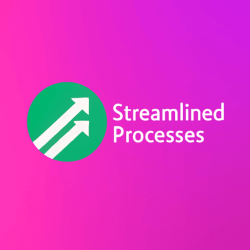For Subscription Billing Platforms For Digital Businesses, see our main page here.
Understanding the Role of Subscription Billing Platforms For Digital Businesses
Running a digital business today often means offering services or products through a subscription model. This shift toward recurring revenue has brought subscription billing platforms to the forefront. These systems help businesses simplify payment processing, automate invoicing, and manage customer subscriptions at scale.
Without a solid billing solution, managing complex pricing tiers or usage-based billing can become overwhelming. As a result, many software-as-a-service (SaaS), e-learning, and digital content companies rely on these platforms for operational efficiency.
What Makes Subscription Billing Platforms For Digital Businesses Essential?
Subscription billing isn’t just about charging customers monthly. It’s also about creating a frictionless experience for users while ensuring accurate revenue recognition and timely renewals. These platforms reduce manual errors and offer deeper insights into customer behavior and churn rates.
For example, a SaaS company offering multiple tiers of service will need to automatically bill customers when they upgrade, downgrade, or pause a subscription. Platforms like Chargebee or Recurly can handle this seamlessly. In other words, they become the financial backbone of scalable digital business models.
Top Features to Look for in Subscription Billing Platforms
Not all platforms are created equal. Choosing the right one depends on your business model, growth stage, and technical needs. Below are key features to consider:
- Flexible Billing Logic: Supports flat-rate, tiered, volume-based, or usage-driven pricing schemes.
- Automated Invoicing & Proration: Adjusts charges based on billing cycles or plan changes.
- Payment Gateway Integration: Works with Stripe, PayPal, and other processors across global markets.
- Dunning Management: Recovery workflows for failed payments and reducing involuntary churn.
- Tax Compliance: Handles global tax rules, such as VAT or GST, with minimal input.
- Analytics and Reporting: Tracks metrics like MRR, LTV, churn rate, and revenue forecasting.
In addition, many platforms offer developer-friendly APIs that let businesses integrate seamlessly into existing workflows and product interfaces.
Popular Subscription Billing Platforms For Digital Businesses
To clarify how different platforms fit specific needs, let’s look at several trusted providers:
- Chargebee: Great for scaling SaaS companies due to its robust integrations and flexible pricing models.
- Recurly: Known for its smart dunning tools and ability to support enterprise-level operations.
- Paddle: Especially friendly for digital product sellers, handling payments, compliance, and tax wherever customers are.
- Zoho Subscriptions: Ideal for small to mid-sized businesses already using other Zoho tools.
- Stripe Billing: A developer-focused system that works well for custom implementations and startups.
Each of these platforms offers specific advantages. Therefore, the best one for you will depend on infrastructure, budget, and customer location.
Real-World Success Stories from Digital Companies
Many digital-first companies have seen impressive results with the right billing platform. For instance, an online educational platform using Chargebee cut staff hours spent on billing from 10 hours a week to just one. Similarly, a podcast hosting service grew recurring revenue 34% after switching to Recurly, thanks to improved plan management and dunning automation.
Moreover, these platforms often evolve with their customers. As businesses move into new markets or shift pricing models, the billing system adapts without major disruption. This flexibility is crucial in the fast-changing digital space.
Common Mistakes to Avoid with Subscription Billing Platforms For Digital Businesses
While these platforms are powerful, improper setup or poor integration can limit their value. Here are several mistakes clients often make:
- Choosing a platform without verifying API compatibility.
- Overlooking tax automation, especially for international customers.
- Failing to properly configure proration rules for plan upgrades or downgrades.
- Using manual workarounds that break scalability later.
To prevent these issues, companies should conduct a thorough technical assessment before onboarding. Furthermore, test billing flows in sandbox environments before going live.
Trends Shaping the Future of Subscription Billing
The future of subscription billing will go far beyond simple invoicing. Artificial intelligence and machine learning are being integrated to predict churn, personalize pricing, and optimize billing dates based on customer data. For example, AI could recommend the best time to retry a failed payment or suggest upsell offers at renewal time.
In addition, we’re seeing increased demand for real-time analytics. Businesses want to react quickly to usage trends and customer behaviors. As a result, platforms are offering more customizable dashboards with deeper segmentation and usage insights.
Therefore, staying updated on these trends ensures your business remains agile and competitive for the long haul.
FAQ: Common Questions About Subscription Billing Platforms
What’s the difference between a payment processor and a subscription billing platform?
A payment processor (like Stripe) handles transactions. A subscription billing platform manages recurring billing logic, plan changes, taxes, and more. The two often work together.
Can I switch billing platforms if my business grows?
Yes, but it can be complex. Ensure your data is portable and plan for a transition period with overlap to reduce disruption.
Do I need technical skills to use these platforms?
Some platforms like Zoho Subscriptions offer no-code options. However, integrating advanced workflows may require developer support.
Are these platforms secure?
Most major billing platforms comply with PCI-DSS standards, ensuring secure handling of payment data. Always verify your provider’s certifications.
Choosing the Right Platform: Final Thoughts
Making the best choice among Subscription Billing Platforms For Digital Businesses starts with knowing your customer base and revenue model. Are you billing per user, per feature, or by usage? Do you plan to expand globally soon?
Answering these questions helps narrow your options. From there, test and iterate. What works today may need adjusting a year from now — and the most flexible platforms are ready for that growth journey.
This article was created with the assistance of AI tools and reviewed by our team at Streamlined Processes LLC to ensure accuracy and relevance.
Follow us on Facebook here.

